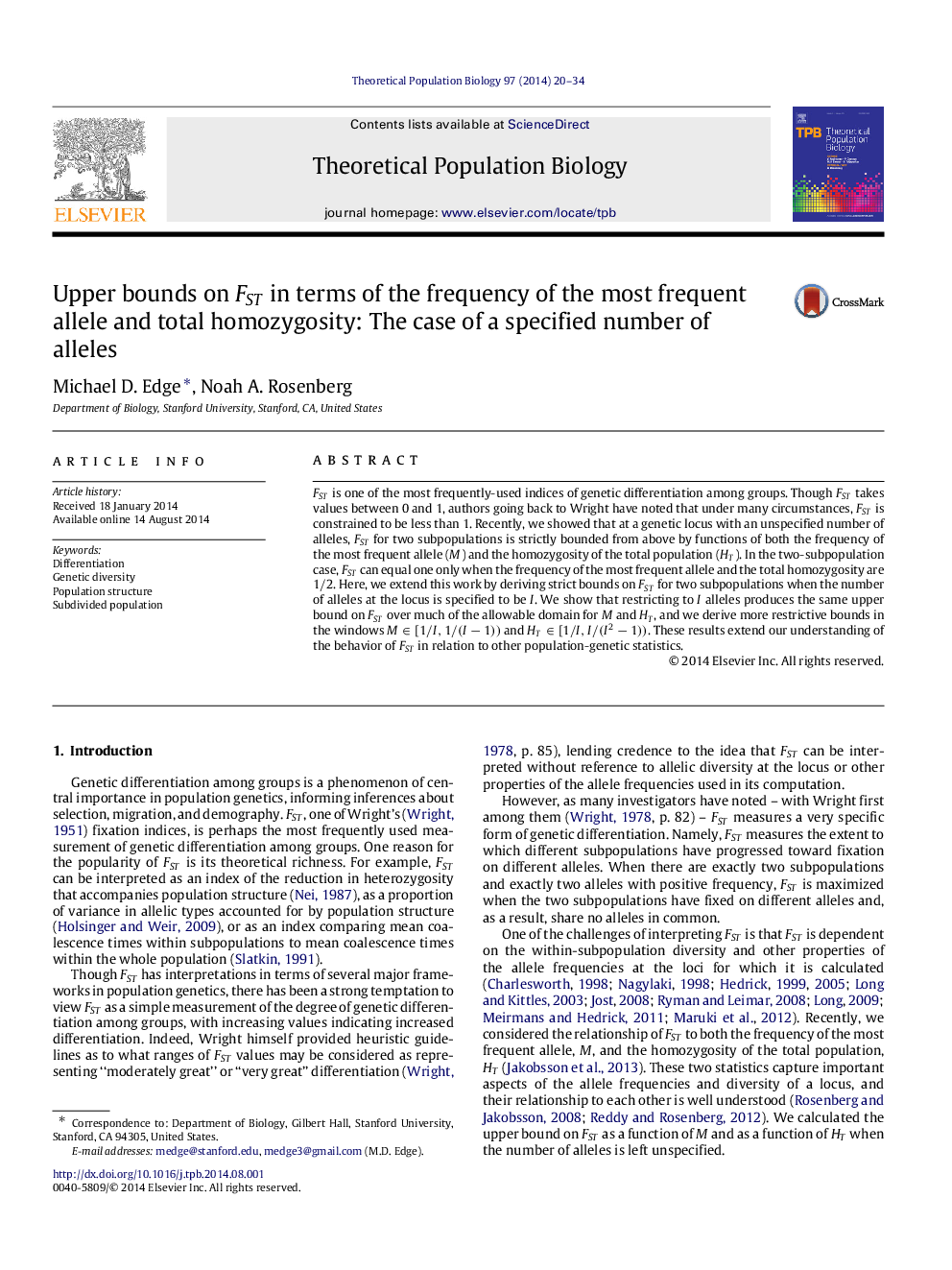| کد مقاله | کد نشریه | سال انتشار | مقاله انگلیسی | نسخه تمام متن |
|---|---|---|---|---|
| 4502377 | 1624155 | 2014 | 15 صفحه PDF | دانلود رایگان |

FSTFST is one of the most frequently-used indices of genetic differentiation among groups. Though FSTFST takes values between 0 and 1, authors going back to Wright have noted that under many circumstances, FSTFST is constrained to be less than 1. Recently, we showed that at a genetic locus with an unspecified number of alleles, FSTFST for two subpopulations is strictly bounded from above by functions of both the frequency of the most frequent allele (MM) and the homozygosity of the total population (HTHT). In the two-subpopulation case, FSTFST can equal one only when the frequency of the most frequent allele and the total homozygosity are 1/21/2. Here, we extend this work by deriving strict bounds on FSTFST for two subpopulations when the number of alleles at the locus is specified to be II. We show that restricting to II alleles produces the same upper bound on FSTFST over much of the allowable domain for MM and HTHT, and we derive more restrictive bounds in the windows M∈[1/I,1/(I−1))M∈[1/I,1/(I−1)) and HT∈[1/I,I/(I2−1))HT∈[1/I,I/(I2−1)). These results extend our understanding of the behavior of FSTFST in relation to other population-genetic statistics.
Journal: Theoretical Population Biology - Volume 97, November 2014, Pages 20–34